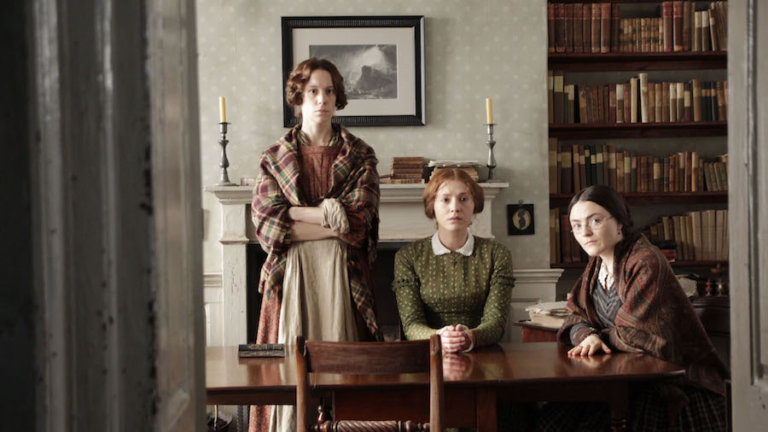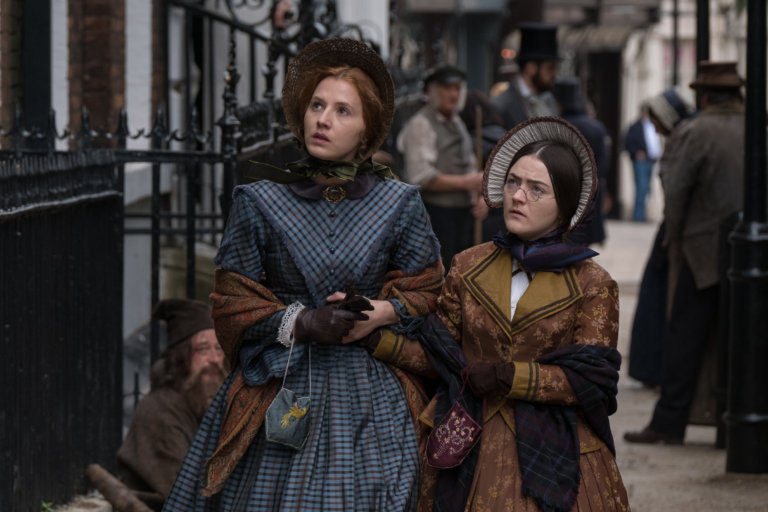By Kaylen Ralph
Since it was published in 1847, Charlotte Brontë’s groundbreaking novel “Jane Eyre” has never been out of print. It consistently shows up on top 10 lists of favorite novels alongside another Brontë novel, “Wuthering Heights,” according to Brontë biographer Juliet Barker.
When it was written, Emily Brontë’s “Wuthering Heights” “left contemporary audiences perplexed and disgusted. It didn’t begin to receive recognition until the 1880s,” Barker said.
So why has the Brontë sisters’ work continued to resonate with readers for more than 150 years? It’s the way the sisters injected their own lives, including imperfections and taboos, into their work.
“Their books have remained popular in a way that other Victorian novels haven’t because they address the experience of the individual rather than simply themes that now seem out of date,” Barker said.

Writing authentically about taboo subjects
For us, the “shocking” subject matter originally explored by the Brontë sisters is par for the course, and certainly not cause for any pearl clutching.
“Where they broke new ground was in writing from their own personal experience as teachers, governesses etc., and with a realism which was raw and uncomfortable for polite society, particularly in their depictions of drunkenness, adultery and cruelty,” Barker said. “They’re also breaking the mold by writing in the first person from the point of view of the middle class and with such passionate demands, in Jane Eyre’s case and Helen Huntingdon’s case, too, to be treated as an equal worthy of respect.”
While their writing is salacious at times, tackling themes such as a woman’s worth, addiction, family dysfunction and sexuality, the real shock value for Victorian audiences was that the subject matter was culled from the Brontës’ own lives. Initially their books were accepted because the sisters published under male pseudonyms, but when their true identities were revealed, the public began drawing connections between the sisters’ writing and what was going down at home in their Yorkshire village.
(Charlotte Brontë) set the agenda which would turn the Brontës into icons,” wrote Lucasta Miller in “The Brontë Myth.” “When Elizabeth Gaskell set about writing her seminal ‘Life of Charlotte Brontë,’ she would use the sisters’ life story as a strategy for distracting attention from the shocking aspects of their books.”
The story of the Brontë sisters became almost as popular as the stories written by the Brontë sisters. Written only two years after her death in 1855, Gaskell’s biography provided the template for a genre of writing that has become just as canonized and re-interpreted as the subject’s own fictional works.
In April 2016, Brontë enthusiasts around the world celebrated Charlotte Brontë’s 200th birthday, sparking a slew of contemporary novels riffing on Charlotte’s life and most popular works, as well as the literary contributions of her two sisters, Anne and Emily, but the work of the women has hardly ever seen a dip in popularity since they burst onto the literary scene in the 19th century.
Introducing authentic female voices in literature
Lyndsay Faye was inspired to write her 2016 novel “Jane Steele” after re-reading Charlotte Brontë’s “Jane Eyre” as an adult, taking particular notice of the introduction that Brontë added to the novel’s second edition—she “blasts her detractors with a verbal fire hose,” Faye said.

“(Jane Eyre) is not written as being considered beautiful,” Faye said. “She’s relatable in the book, she’s not a male writer’s version of a Disney dream princess, she is a somewhat frustrated and prickly woman dealing with a difficult economic reality. She is very real to us, because she was written by a woman who confronted that situation. Her defining characteristic is authenticity.”
Faye’s “Jane Steele,” then, reimagines the character of Jane existing within similar circumstances, but as “an antagonist instead of a protagonist… How would that reshape her life?”
“Solsbury Hill,” a 2014 novel by Susan Wyler inspired by Emily Brontë’s “Wuthering Heights,” is often read alongside the original in high school English classes, Wyler said. She believes the Brontës’ legacy will certainly endure for another 200 years.
The drama inside the Brontë women’s stories will always find resonance, because humans will always struggle with loss, isolation, feelings of orphanhood and abandonment, will always yearn for deep connection, even unhealthy merging,” Wyler said. “There’s something about all of their stories that is raw and unmitigated.”
Faye said that the themes of “passion and survival and loyalty” will never go out of style, “because they are how we live and who we are. When we get tired of love stories, I think we should probably pack up and go home.”
Want to learn more about these timeless literary groundbreakers? “To Walk Invisible: The Brontë Sisters” is streaming – watch the full episode!
![]() This article originally appeared on Rewire
This article originally appeared on Rewire
© Twin Cities Public Television - 2017. All rights reserved.
Read Next



